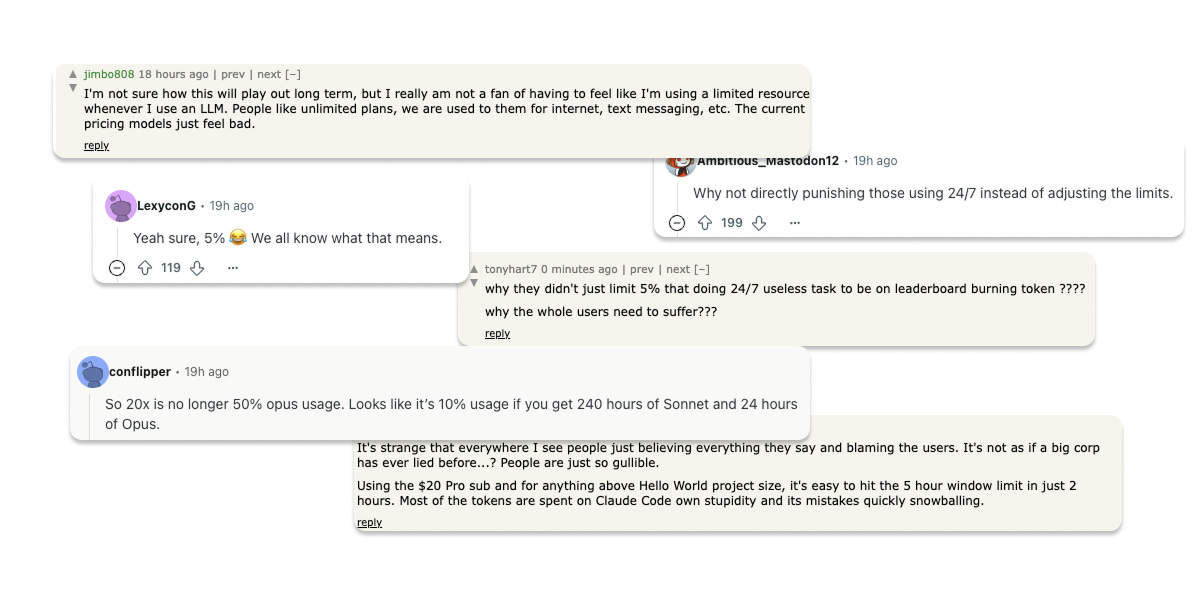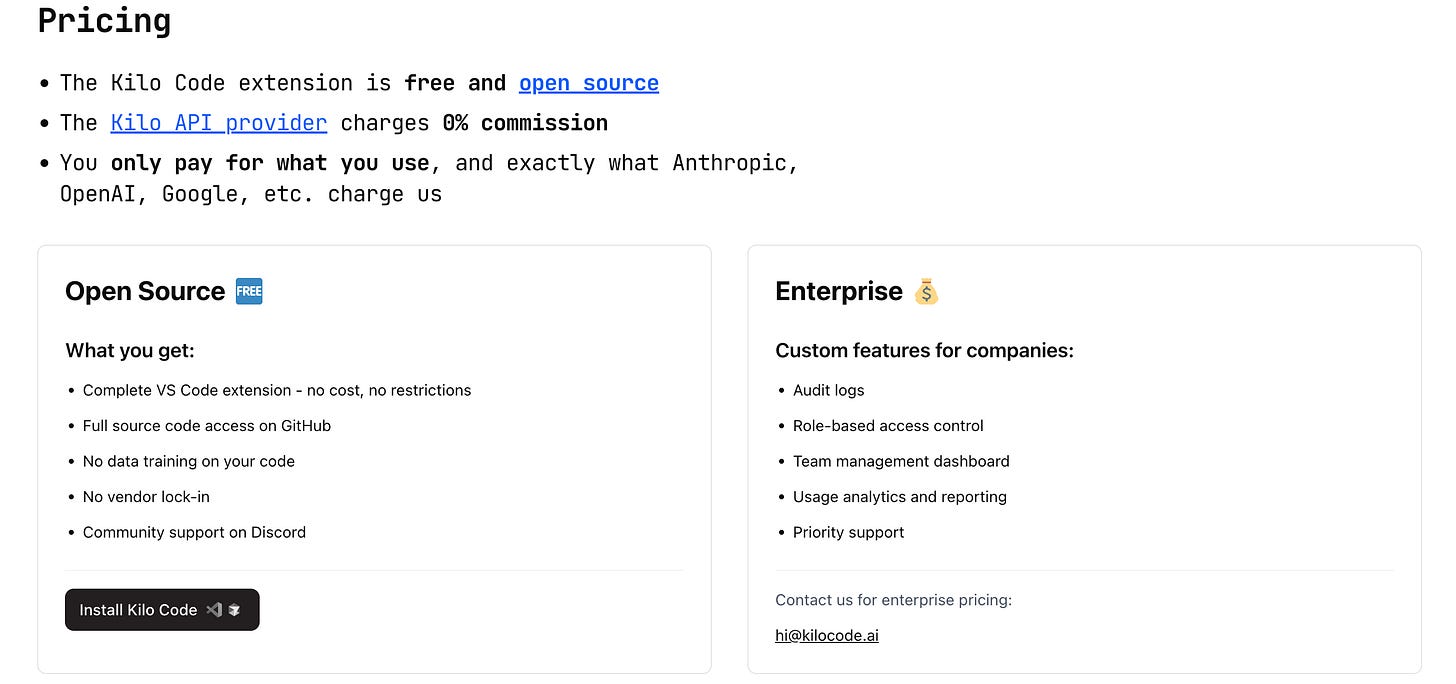After Cursor, it’s now Anthropic’s turn to receive pricing blowback on Reddit, X and Hacker News.
After Claude Max subscriptions were hit with weekly usage limits, the community got frustrated:
When the backlash happened,
from open source AI coding startup Kilocode wrote “Stop selling "unlimited", when you mean "until we change our minds", which was #1 on Hacker News for hours today. Then wrote “Claude closed”.This is happening so frequently (we haven’t even mentioned the Windsurf and GitHub examples earlier this year) that it was time to dig deeper and figure out why this keeps happening.
At this point, we all know AI is expensive. But this isn’t about what you charge, it’s about how you charge. And it looks like there are some fundamental issues here that plague the whole ecosystem’s pricing models. Let’s analyze and address them.
Why IDEs have more pricing scandals
Windsurf, Cursor, Claude Code—there seems to be a pattern: It’s always the coding tools that get pricing backlash. Why is nobody complaining about AI customer service pricing? Why does nobody hate on AI marketing tools?
The problem is simple: There’s a mismatch between pricing strategy and product use case.
When you’re coding, you want to get into flow. The point is to complete the project you’re building. And that project is impossible to scope right away. Sometimes you open your IDE to fix a minor bug in 10 minutes, sometimes you’re about to spend 5 hours building a new feature from scratch.
So with usage restrictions, you either:
Have to work without the most useful (AI) features because a paywall showed up.
Worry about usage limits kicking in and rationing your usage to smaller use cases or using worse models.
Worry about your bill skyrocketing (in pay-as-you-go pricing).
All of those things are the opposite of the experience you want from an IDE. They actively harm the UX. Meanwhile all of those 3 restrictions are fine in other categories:
When I run out of credits in my AI SEO tool, it’s fine because the AI triggers a discrete workflow (running a bunch of prompts to see how/where Lago is mentioned). I can’t use the feature, but I’m not interrupted by a paywall.
In AI customer service, the usage units are relatively uniform: Customer service chats differ, but none of them are thousands of messages long.
In pay-as-you-go infrastructure (e.g. inference clouds like Groq), it’s typically someone’s actual job to monitor costs.
Would we love unlimited usage on all of these? Sure! Is that economically possible at the moment? No.
So it’s AI-powered coding tools specifically that are in a tough spot: To offer the best possible UX, they should offer generous/unlimited usage, but they economically can’t.
I don’t think these companies have an evil plan of making false promises and breaking them. They’re just stuck in a Catch-22.
So, what should we do?
Should everything be pay-as-you-go?
The open source alternative Kilocode prices radically different: They make zero money on their VS Code extension or APIs. All tokens are the exact price from the vendors, you can bring your own API key or even use locally hosted models:
This is an admirable position. And at Lago we’ll always support open source startups. While this kind of pricing always finds its audience, it still runs into a problem: Paying by the token always comes with the obligation of monitoring that spend.
Cost control features can ameliorate that problem, but it doesn’t matter who builds the paywall—your workflow is still interrupted. It puts the user in control, but doesn’t solve the core problem: AI models are currently too expensive to offer the kinds of unlimited subscriptions users want.
Where do we go from here?
I remember being afraid of pressing the internet button on my cell phone because of how expensive it was. Today, I stream YouTube videos on my phone without thinking twice. An unlimited mobile internet subscription seemed impossible in the early 2000s.
Most technology gets cheaper over time. We’re already seeing this with AI: DeepSeek and Mistral’s open source models are way cheaper than Anthropic’s and OpenAI’s proprietary ones.
But I’m sure in a few years, we’ll look back on this as a memory of how expensive it used to be. And maybe we’ll be reading this article using an AI agent built with our unlimited-usage AI-powered IDE.






It seems like claude's communication was more clear than cursor at least.